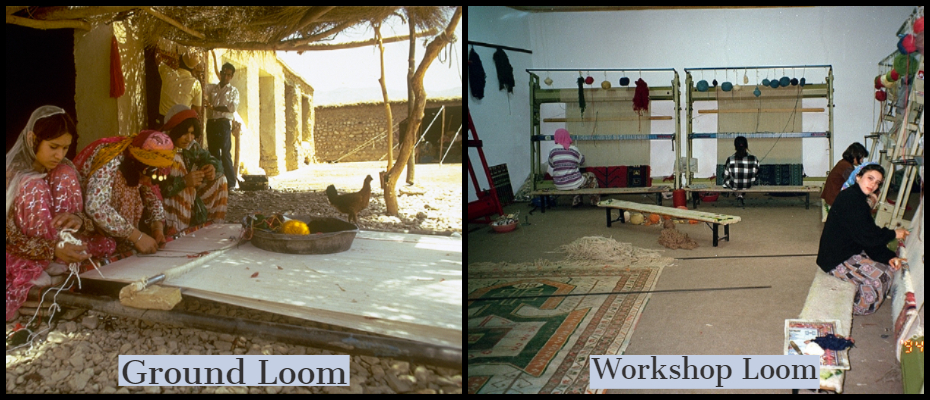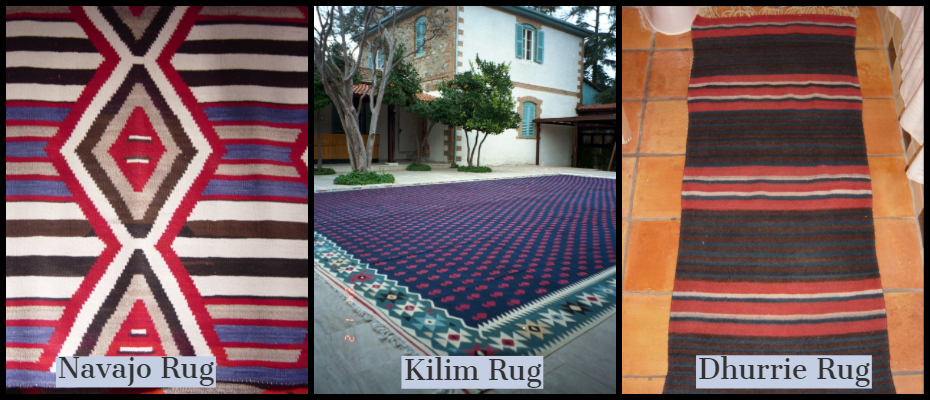Any who washes rugs or wishes to expand into this facet of cleaning will benefit from knowing, understanding and using the correct terminology when talking to clients and prospects about rugs. This blog focuses on hand-knotted rugs. Machines made rugs and others will come in the future.
Let’s start with some basic descriptions and definitions.
Woven rugs are constructed on a loom. This may be a mechanical loom in a factory-like setting, a non-mechanical loom set up in a small city with the weaving done by hand, or a less sturdy portable loom used by nomadic peoples. This loom may be placed in a horizontal position on the ground. Whatever form the loom takes, it includes cross beams at each end. Warp yarns, the yarns that run end to end, are stretched tightly between these supporting beams.

Warp yarns pass through heddles which allows them to be either raised or lowered. Alternate warps are raised and lower creating a space, or shed, between the raised or unraised threads through which the weft yarns can pass. Weft yarns are carried through the shed by a shuttle. If the rug is machine made, weft yarns may also be called stuffers, filling or picks depending upon the specific construction.
Interlaced warp and weft yarns can form a flat woven rug with no pile. Kilims, dhurries, Aubusson, and Navajo rugs are examples of flat woven rugs. Patterns are formed by the colors of the warp and weft yarns. The back of the rug will look the same as the front. Both sides may be used, but all the wear is placed on these foundation yarns.

Pile yarns are often added to the foundation composed of the warp and weft yarns. The pile is formed by short pieces of yarn tied to the foundation yarns adding a third dimension to the rug. The manner in which the pile is knotted tells a lot about the rug.
A rug may be hand-made or machine made. The face or top surface of machine made rugs may look very similar to a hand-knotted rug. The difference is like the difference between an original work of art and a reproduction. The mass-produced version may look fine on your wall or floor, but some will appreciate all that went into producing the original art. The value of a hand-made rug will be more than the value of a similar machine made piece.
Examining the back of a rug is the best way to learn if it is hand-made or machine made and to pick-up other information about the construction.
In a hand-made rug, the pile yarns are tied or wrapped around warp yarns. Knotting techniques known as Persian (or asymmetrical), Turkish (symmetrical), Jufti and other styles are one source of information about the rugs origin. (Illustrations of various knot styles) One illustration has red knots on white warp yarns in the asymmetrical (AKA Persian) style and also yellow knots in symmetrical (AKA Turkish) style
Notice that each knot is wrapped around two (or sometimes more) warp yarns. When looking at the back side of the rug, there will be two points or nodes for each knot.
Once a row of knots is in place, they are packed tight against the weft yarn with a tool called a comb. Then the next weft yarn or yarns are inserted followed by another row of knots.
Like pixels on a digital camera or television, knots placed more closely together can create a more detailed pattern. The knot count can be determined by looking at the back of the rug. But, what you see does not always tell the entire story. Some rugs have a depressed warp. A portion of each knot is hidden. You may not be counting all the knots unless you know where to look. Photo of rug with depressed warp.
There are several systems used to designate the knot count. Americans are most familiar with knots per square inch. Just measure an inch, count the knots across the width of the rug and multiply by the number of knots in a lengthwise inch.
A tribal rug made with coarse wool on a horizontal ground loom may have 40 knots per inch. A rug with face yarns of fine silk may have more than 1000 knots in a square inch. As you can imagine, tying all those knots by hand is a slow and labor intensive process.
